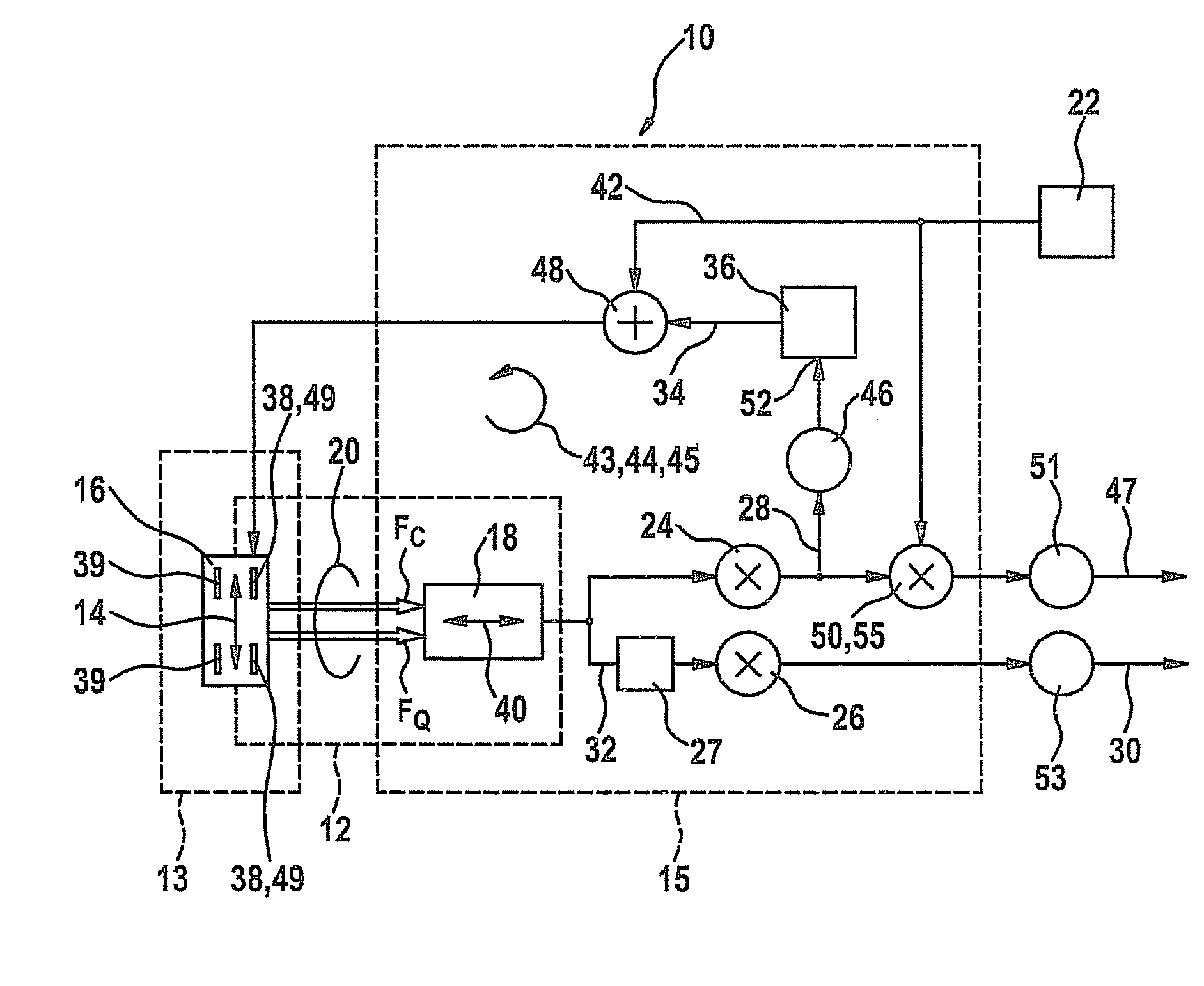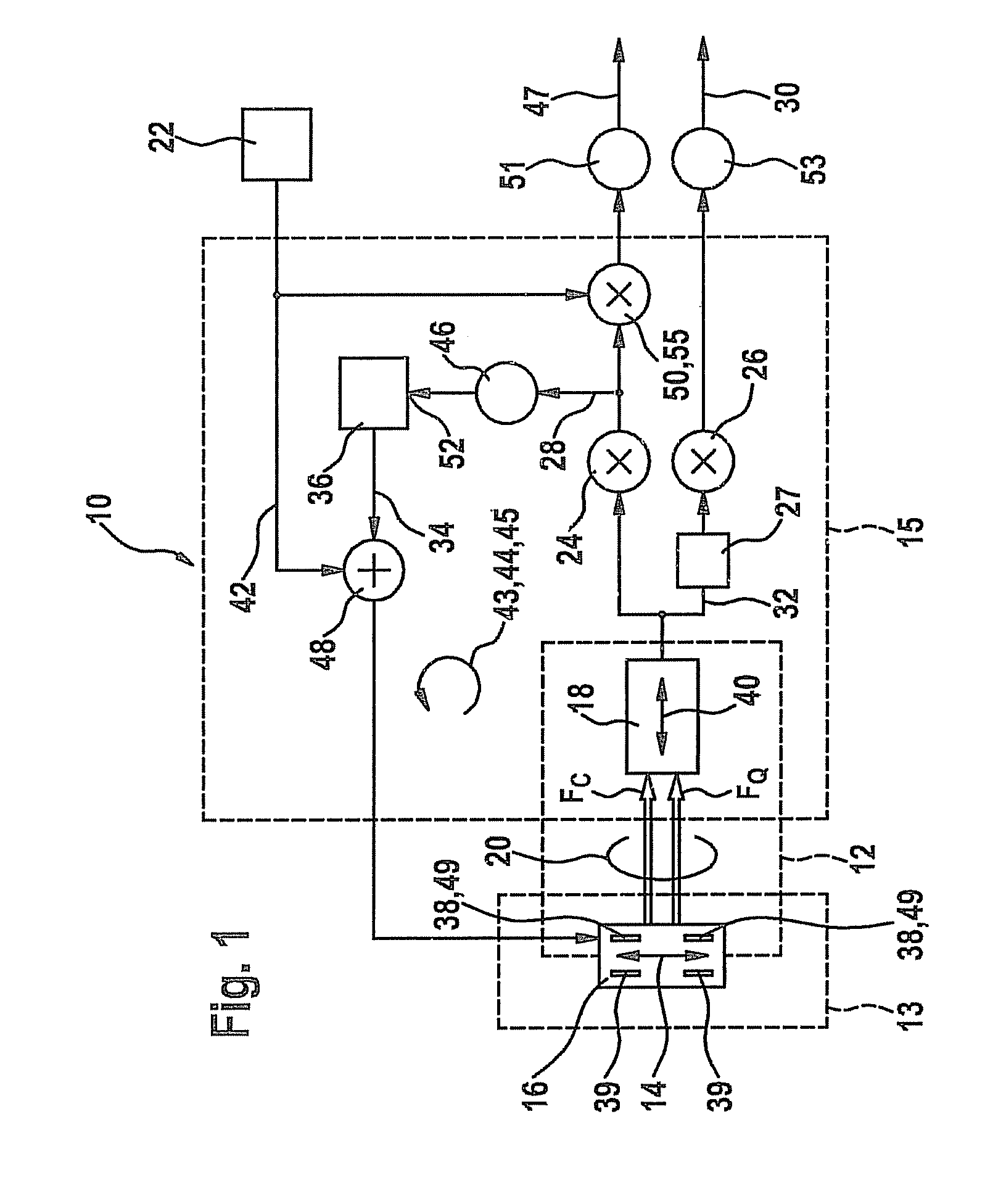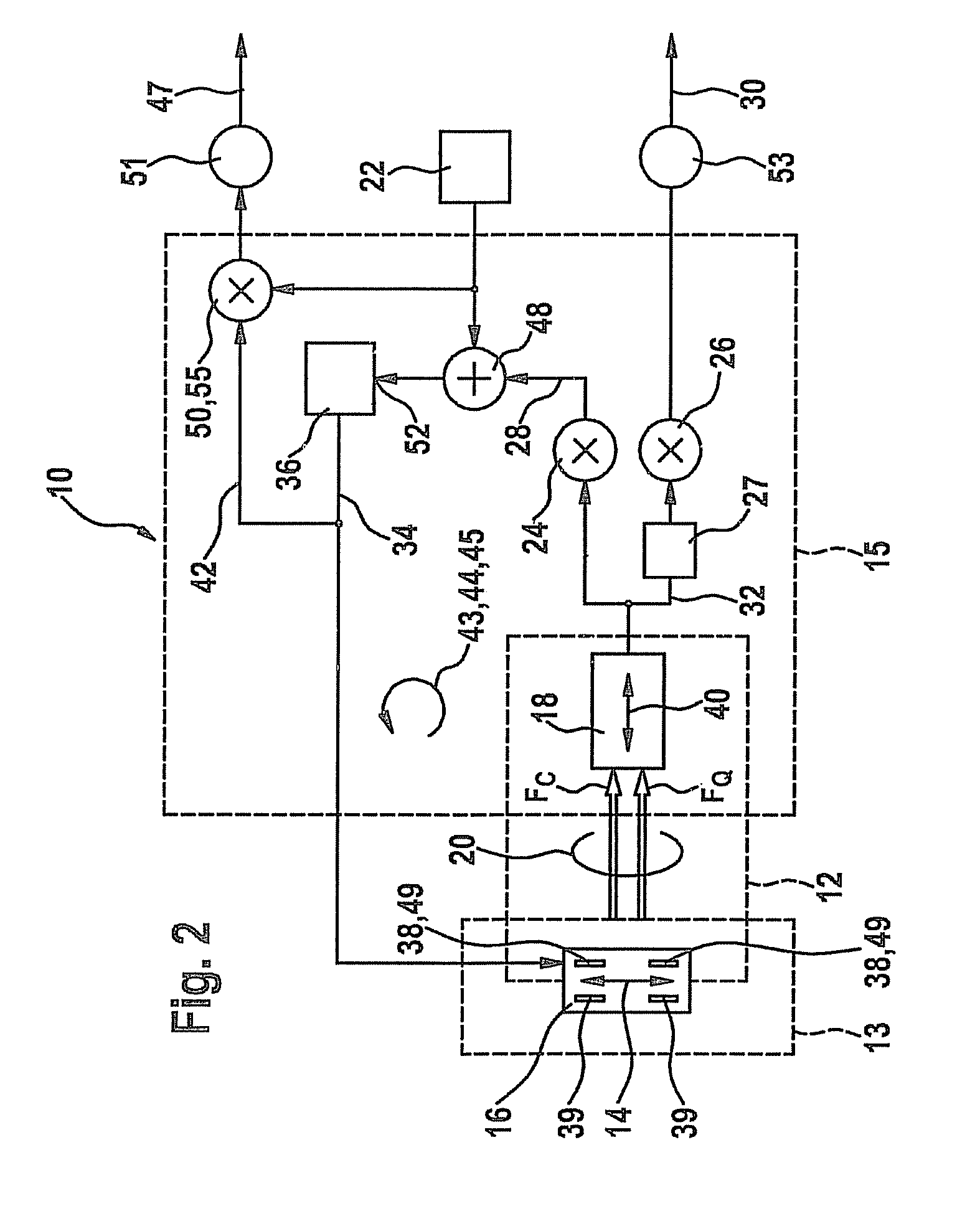Self-test for yaw rate sensors
a self-testing and sensor technology, applied in the field of yaw rate sensors, can solve the problem that the section of the quadrature control loop between the feed location and the readout location is not detected by functional testing, and achieve the effect of improving functional testing
- Summary
- Abstract
- Description
- Claims
- Application Information
AI Technical Summary
Benefits of technology
Problems solved by technology
Method used
Image
Examples
Embodiment Construction
[0017]In a micromechanical yaw rate sensor 10 (vibration gyrometer), use is made of the Coriolis effect for determining an external yaw rate Ω. For this purpose, a movable mass structure 12 of sensor 10 is set in motion at a speed v in a first direction x. This is achieved with the aid of a drive vibration 14 having a frequency ωA. Movable mass structure 12 may include a drive mass 16 and a detection mass 18, a preferred vibration direction x of drive mass 16 being oriented orthogonally relative to a preferred vibration direction y of detection mass 18. As the result of mechanical coupling 20 with the aid of a spring system, a Coriolis force FC which results from a yaw rate Ω of mass structure 12 and which acts on drive mass 16 is transmitted to detection mass 18 in the direction of preferred vibration direction y of detection mass 18. Since in general the two vibration directions x, y are not precisely orthogonal, deflection 14 of drive mass 16 results in a second force component F...
PUM
 Login to View More
Login to View More Abstract
Description
Claims
Application Information
 Login to View More
Login to View More - R&D
- Intellectual Property
- Life Sciences
- Materials
- Tech Scout
- Unparalleled Data Quality
- Higher Quality Content
- 60% Fewer Hallucinations
Browse by: Latest US Patents, China's latest patents, Technical Efficacy Thesaurus, Application Domain, Technology Topic, Popular Technical Reports.
© 2025 PatSnap. All rights reserved.Legal|Privacy policy|Modern Slavery Act Transparency Statement|Sitemap|About US| Contact US: help@patsnap.com



